Celebrating statehood: Michigan's state symbols
“The whisper of the forest tree, the thunder of the inland sea; unite in one grand symphony of Michigan, my Michigan,” – Giles Kavanagh
By JOHN PEPIN
Michigan Department of Natural Resources
Just like in the 1963 Elvis Presley movie of the same title, it happened at the world’s fair. But it wasn’t at Seattle’s Century 21 Exposition – where the hip-shakin’ King of Rock-n-Roll not only sang and grooved in the movie, but also starred as a pilot who flew a crop-dusting plane – it was instead in Chicago, in 1893.
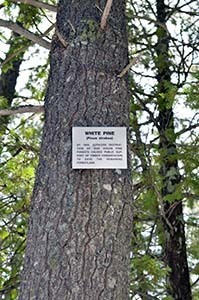
That’s when and where a special “National Garland of Flowers,” crafted from flowers representing each of the then 44 U.S. states, was presented at the World’s Fair: Columbian Exposition to more than 27 million attendees.
This would foreshadow the inspiration of states, including Michigan, to eventually adopt representative symbols ranging from fish to fowl, cars to canines.
Today, the lists of these state symbols can be long, depending on the state, and often contain some interesting, unique and unexpected inclusions.
For example, Maryland has an official sport, and it is jousting. The state vehicle of Texas is the chuck wagon. Just under half of our states share a state dance, and that dance is the square dance.
Even with more conventional categories, there are unexpected entries. Maine’s state “flower” is the white pine cone.
In 1996, Utah designated the beehive cluster as its official state star cluster. Wisconsin has an official state dog – the American water spaniel – while Maryland adopted the tabby as its official state cat.
But that isn’t all Massachusetts has. The Bay State is also home to a state muffin (corn), state inventor (Ben Franklin), state donut (Boston cream) and a state beverage (cranberry juice).
|
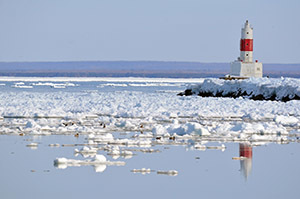
In fact, Massachusetts has 55 official state symbols.
Here in Michigan, like many other states, we of course have our state flag, capital, seal and coat of arms.
Most residents know our state nickname is the “Great Lakes State.” Another Michigan nickname is "The Wolverine State," even though only one wolverine was ever known to have lived in the wild in the state. There are several theories about the moniker’s origin, but it may stem from the state’s history as a center for trade in the early trapping industry, when wolverine pelts from the north and west came through Michigan.
Many know our state motto is Si quaeris peninsulam amoenam, circumspice, which means, “If you seek a pleasant peninsula, look about you.”
The origin of Michigan’s name comes from the Ojibwa word “meicigama,” meaning “great water.”
|
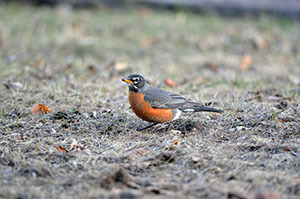
Beyond these, Michigan has nearly a dozen state symbols.
Check out a Michigan state symbols infographic.
Sixty years after Michigan was admitted to the Union as the 26th state, and four years after the Chicago world’s fair, Michigan designated the first of these symbols – the apple blossom – as its state flower.
Schoolchildren are among the most familiar with state symbols because in many cases they have been the source of their nomination, subsequently adopted by state legislatures.
Elementary and middle school students, as well as most adults, know the robin redbreast (American robin) is the state bird (1931); the state tree is the eastern white pine (1955) and that the Petoskey stone, a fossilized coral, is Michigan’s state stone (1965).
|
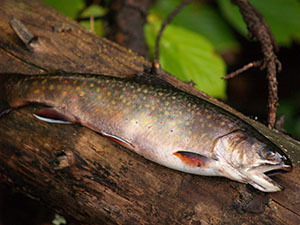
The Michigan Legislature adopted “the trout” as the state fish (1965) before clarifying that designation as the brook trout in 1988. The state song, “My Michigan,” written by Giles Kavanagh and H. O’Reilly Clint, was adopted in 1936.
In 1973, the Isle Royale greenstone was selected as Michigan’s state gem.
From this point on, it can get more challenging for most Michiganders to continue to list our state symbols. Many of the remaining entries have been designated relatively recently.
In 1990, the Kalkaska soil series was identified as Michigan’s state soil.
|
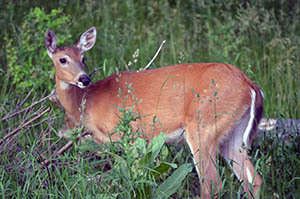
In 1995, Niles fifth-grade students mounted a successful effort to get the painted turtle named the state reptile. A group of fourth-graders worked to get the white-tailed deer selected as the state’s game animal in 1997.
In 1998, the dwarf lake iris was selected as Michigan’s state wildflower.
Schoolchildren also helped college geology professor David P. Thomas Sr. get the mastodon established as Michigan’s state fossil in 2002.
Michigan celebrates its 182nd Statehood Day birthday on Saturday. The Michigan Department of Natural Resources is hosting its own statehood birthday party at its Michigan History Museum in Lansing.
|
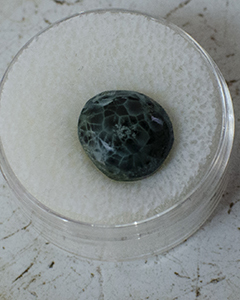
Our state’s birth story is somewhat unusual, as the path to statehood wasn’t quite as easy for Michigan as for most other states. The first Michigan Constitution was written in 1835, nearly two years before we officially became a state.
The “Toledo War” – a dispute over whether the city of Toledo was actually in Michigan or Ohio – delayed the process because the federal government wouldn’t grant Michigan statehood until the disagreement was resolved. Find out more.
Congress ultimately gave Toledo to Ohio and offered Michigan the western Upper Peninsula as a compromise, making Michigan arguably the war’s real winner, considering how valuable the U.P.’s natural resources proved to be.
With the boundary dispute settled, President Andrew Jackson signed a bill making Michigan the 26th state Jan. 26, 1837.
Learn more about how Michigan became a state with this fun video from the Michigan History Center.
To learn a great deal more about Michigan’s statehood and state symbols, visit SeekingMichigan.org/Learn.
Check out previous Showcasing the DNR stories in our archive at Michigan.gov/DNRStories. To subscribe to upcoming Showcasing articles, sign up for free email delivery at Michigan.gov/DNR.
|
/Note to editors: Contact: John Pepin, Showcasing the DNR series editor, 906-226-1352. Accompanying photos and a text-only version of this story are available below for download. Caption information follows. Credit Michigan Department of Natural Resources, unless otherwise noted.
Text-only version of this story.
Blossom: Apple blossoms are a familiar sight throughout the state, and Michigan’s state flower.
Bridge: The Mackinac Bridge, connecting the Upper and Lower Peninsulas, is one of Michigan’s signature features.
Deer: The white-tailed deer is the Michigan state game animal.
Greenstone: Isle Royale greenstone is Michigan’s state gem.
Lake: No matter the weather, Michigan loves its Great Lakes. Pictured is Lake Superior at Marquette.
Pine: The white pine is Michigan’s state tree.
Robin: The American robin, one of the first species to arrive each spring on migration, is Michigan’s state bird.
Stone: Michigan’s state stone is the Petoskey Stone, which is made from fossilized coral.
Trout: The beautifully colored brook trout is Michigan’s state fish.
Turtle: The painted turtle, like this one at a nest, is Michigan’s state reptile./
|